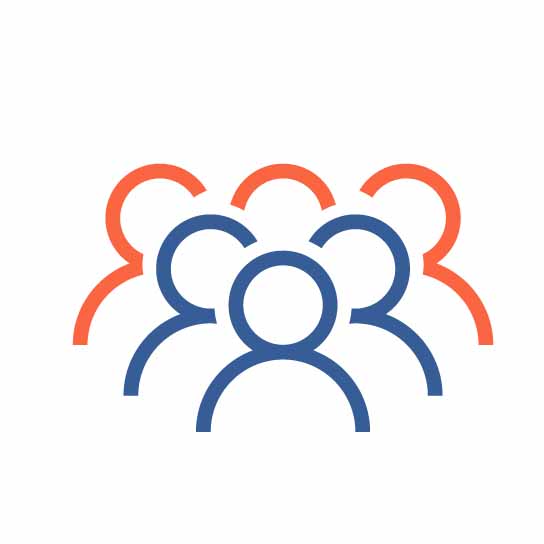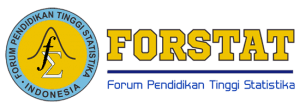Faktor Yang Berpengaruh Terhadap Kematian Bayi Baru Lahir Di Daerah Kepulauan Alor
Abstract
Binary logistic regression is an analysis that aims to determine the relationship between one or more predictor variables that are quantitative, qualitative, or a combination of both to a dichotomous response variable with two categories. Binary logistic regression analysis can also be applied in the health sector, especially in newborns' dead or alive status. Infant deaths in Indonesia, especially in the Alor Islands, are still widespread, which is due to several factors. In this study, several variables are thought to influence the status of the newborn, namely the newborn's weight, the baby's body length, the baby's gender, asphyxia, the mother's systolic blood pressure, and the mother's age at birth. The results of the analysis from this research showed that the factor that influences the death of newborn babies in the Alor Islands area is asphyxia. Newborn babies who experience asphyxia are 109,947 times more likely to die compared to babies who do not experience asphyxia.
Keywords
Full Text:
PDFReferences
Hosmer and Lemeshow, Applied Logistic Regression. USA: John Wiley Sons, 2000.
Agresti, Categorical Data Analysis. New Jersey. John Wiley Sons, 2002.
Y. Anggraeni and I. Zain, "Pemodelan regresi logistik biner terhadap peminat its di seleksi bersama masuk perguruan tinggi negeri (sbmptn) 2014" Jurnal Sains dan Seni ITS, vol. 4, no. 1, p. 2015, 2015.
Y. Tampil, H. Komaliq, and Y. Langi, "Analisis regresi logistik untuk menentukan faktor-faktor yang mempengaruhi indeks prestasi kumulatif (ipk) mahasiswa fmipa universitas sam ratulangi manado" d'CARTESIAN: Jurnal Matematika dan Aplikasi, vol. 6, no. 2, pp. 56-62, 2017.
F. F. M. D. F. S. d. B. Wulandari, A., "Penerapan metode regresi logistik biner untuk mengetahui determinan kesiapsiagaan rumah tangga dalam menghadapi bencana alam" in Seminar Nasional Official Statistics, vol. 2019, no. 1, 2019, pp. 379-389.
T. M. T. Nisva and V. Ratnasari, "Analisis regresi logistik biner pada faktorfaktor yang mempengaruhi jenis perceraian di kabupaten lumajang" Inferensi, vol. 3, no. 1, pp. 29-36, 2020.
S. D. Anugrawati, I. W. Saputri, K. Nurfadilah et al., "Analisis regresi logistik biner dalam penentuan faktor-faktor yang mempengaruhi ketepatan waktu lulus mahasiswa uin alauddin makassar" Journal of Mathematics: Theory and Applications, pp. 11-16, 2023.
M. Rafiq, A. A. Rahmadani, A. A. Putri, D. M. Happy, J. Julia, M. A. D. Dala, M. T. Angka, and W. Wasono, "Analisis regresi logistik biner untuk memprediksi faktor-faktor internal yang memengaruhi keharmonisan rumah tangga menurut provinsi di indonesia pada tahun 2021" in Prosiding Seminar Nasional Matematika dan Statistika, vol. 3, no. 01, 2023, pp. 116-127.
B. P. P. N. (Bappenas), "Pedoman teknis penyusunan rencana aksi tujuan pembangunan berkelanjutan atau sustainable development goals (sdgs)" Jakarta: Kementerian PPN, Bappenas, 2020.
B. P. S. (BPS), "Kajian indikator sustainable development goals (sdgs)" Jakarta: BPS, 2020.
A. R. Andriani, A. Sriatmi, and S. P. Jati, "Faktor penyebab kematian bayi di wilayah kerja puskesmas ngombol kabuapten purworejo (studi kasus tahun 2015)" Jurnal kesehatan masyarakat, vol. 4, no. 1, pp. 23-33, 2016.
Y. M. Alamneh, A. Negesse, Y. A. Aynalem, W. S. Shiferaw, M. Gedefew, M. Tilahun, Y. Hune, A. Abebaw, Y. Biazin, and T. Y. Akalu, "Risk factors of birth asphyxia among newborns at debre markos comprehensive specialized referral hospital, northwest ethiopia: unmatched case-control study" Ethiopian Journal of Health Sciences, vol. 32, no. 3, 2022.
I. Hartiningrum and N. Fitriyah, "Bayi berat lahir rendah (bblr) di provinsi jawa timur tahun 2012-2016" Jurnal Biometrika Dan Kependudukan, vol. 7, no. 2, pp. 97-104, 2019.
G. T. Lengkong, F. L. Langi, and J. Posangi, "Faktor-faktor yang berhubungan dengan kematian bayi di indonesia" Kesmas, vol. 9, no. 4, 2020.
DOI: https://doi.org/10.37905/jjps.v5i2.19432
Refbacks
- There are currently no refbacks.
Copyright (c) 2024 Jambura Journal of Probability and Statistics

This work is licensed under a Creative Commons Attribution-NonCommercial 4.0 International License.







.jpg)






